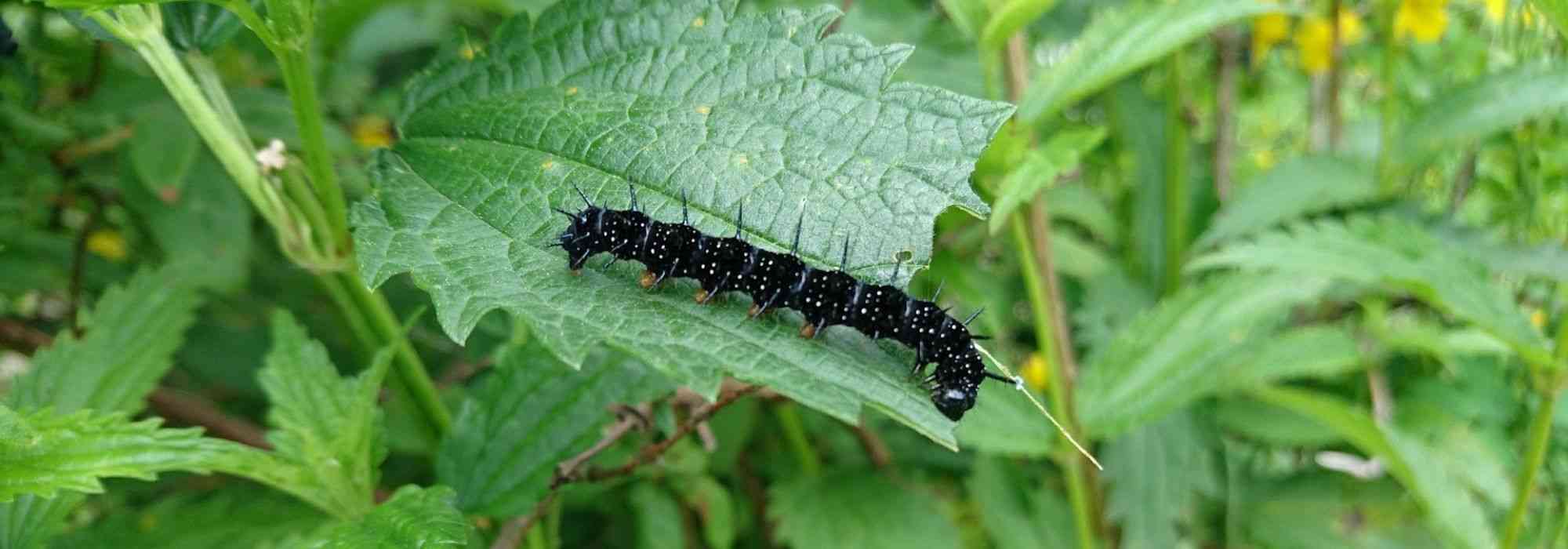
Designing and laying out a natural and ecological garden
Key principles of genuine organic gardening
Contents
Not all gardens are necessarily ecological, even if that may seem surprising! It must be admitted that a closely-mown lawn surrounded by a Thuja hedge, as still seen far too often, is hardly welcoming for fauna and flora, or even people. Can that even be called a garden… Yet natural, wild gardens have many advantages: they are attractive year-round without being too demanding, cope well with climate-related hazards, but above all they will provide a safe refugium for a whole range of wildlife: birds, mammals, amphibious animals, insects, spiders, … These natural, ecological gardens are also an opportunity to do one’s bit in a world that is going increasingly pear-shaped. The story of the little hummingbird and its thimble filled with water trying to put out the fire…
Why an eco-friendly garden?
We are experiencing a real erosion of biodiversity in recent years for various reasons: long-term use of pesticidal products in agricultural environments and even in our own gardens, pollution of wetlands, destruction and fragmentation of natural habitats, climate change, pressure from invasive species, deforestation, overfishing, … For most of these causes, we ordinary citizens, sadly, cannot do much. But the consequences remain dramatic: loss of standing crop, reduced rate of decomposition of organic matter, uncontrolled invasion of pests (notably mosquitoes), reduction in entomophilous pollination and therefore reduction in food production, indirect contribution to climate warming…
“When Man has cut down the last tree, polluted the last drop of water, killed the last bison and caught the last fish, then he will realise that money is not edible.” Sitting Bull
If you want to help fauna and flora in our regions, you can turn your garden into a sanctuary, a kind of oasis of biodiversity. This will create what ecologists call an ecological corridor: a transitional area between two natural habitats that are too far apart.
Above all, give priority to spontaneous and local flora. These plants are the starting point of all interactions among living beings: the very definition of an ecosystem.
Every living being, even the most insignificant or the one everyone hates, has a role in nature sometimes (often) overlooked. Whether as simple food for another or for more complex functions: mutualism, mono-specific pollination, detritivore…
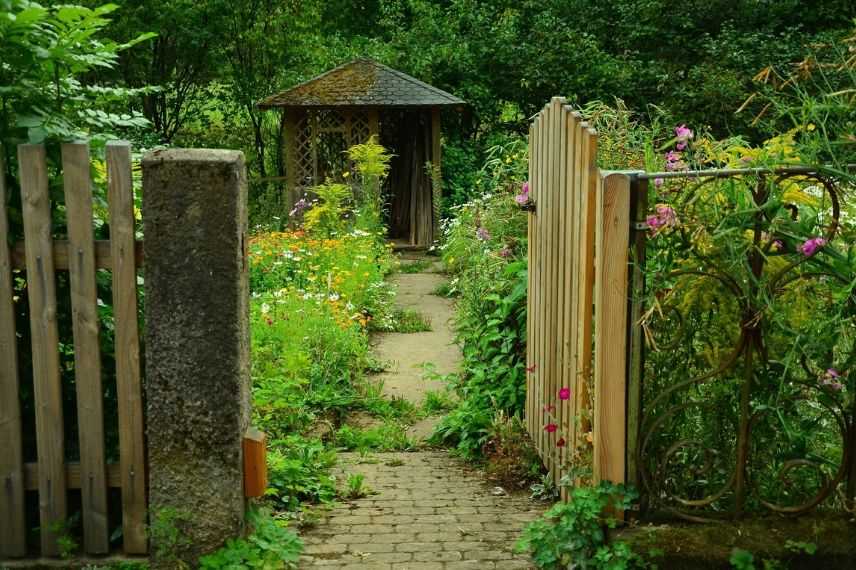
Read also
Hedge for birds: which shrubs to choose?Choosing the right plants is essential!
- Plant wild plants : there was a time when people would look at you strangely for having planted, or even simply allowed to grow, a native plant, a “weed” as people say. Now, they are making a comeback in nurseries and garden centres for excellent reasons. They are often very beautiful and hardy, as well as useful for nature. It is not always necessary to buy them: you can just as well let them arrive naturally or swap them with fellow nature-loving gardeners. There are plenty of good reasons to let “weeds” grow.
- Plant plants suited to your soil and your climate : and not only native ones. Sometimes soil and the micro-climate of your garden are not suitable for growing certain native plants but perfectly suit more “exotic” plants that can replace them. Always think carefully about plants’ needs when choosing them! Stock from local nurseries and/or growers who raise their plants “hard” is a guarantee of better establishment and greater resilience for your plants. Forget ‘low cost‘ or greenhouse-forced plants pumped full of fertiliser!
- Little or no watering and no treatments : avoid over-watered plants. Water is becoming a rare resource. And treatments, even organic ones, should be avoided. If a plant suffers in your garden, it clearly does not belong there.
- Think of melliferous and nectariferous plants : many flowering plants attract and feed insects. Give preference above all to single flowers and forget double, triple blooms… which prevent insects from feeding.
- No more witch hunts! : the back of your garden where you never set foot can host a thicket of brambles and some nettles, both very useful for butterflies, other insects and even birds. Edges of your short grass meadow can well be left un-mown. After a few decades of sanitised gardening, mentalities are changing and it is no longer rare to see tall grass at the feet of fruit trees, for example.
- Think of companion plants : in nature plants live together, sometimes intimately, even one within another. Try to imitate nature by planting your plants fairly close. Moreover, some plants, thanks to essential oils or other chemical compounds, can help or protect other plants: this is known as the principle of allelopathy. Beneficial associations in vegetable garden or orchard are now well known, with certain plants able to deter diseases or pests from our vegetables and fruit trees.

Let wild plants be; nature will reward you!
Let's plant trees to tackle global warming.
If you have the space, plant trees and bushes! Their benefits in the garden and for nature are numerous :
- they regulate temperature and humidity;
- they provide shelter and food for a whole host of wildlife : birds, insects, small mammals… all these creatures need trees and bushes for nesting or foraging;
- they filter wind and dust;
- they bind pollutants : you never really know what remains in your garden soil. Most plants immobilise heavy metals and other pollutants but trees remain the most effective;
- they stabilise soil against erosion : their roots reach deeper into ground than perennials or annuals, so they hold soil more effectively;
- they add standing crop to the soil : wood and leaves that fall to the soil, perfect for improving it;
- moreover, they are beautiful and provide shade! : just bear in mind that a tree that has reached maturity can sometimes become too large. It is up to you to choose species and cultivars suited to the size of your garden.
Care: less is always better
Maintain ecologically
No more mowing every five days — let the herb grow! You will be greatly surprised by quantity and variety of flowers and grasses that will appear in just a few weeks. If you want your garden to remain “tidy” or at least managed, you can cut a small path with a mower or a strimmer through your wild short grass meadow. Guaranteed aesthetic effect while preserving a good area for biodiversity. Alternatively, an annual cut, in early spring or late autumn, of this flower meadow will suffice to maintain good botanical diversity. You will need to remove the result of this cut to avoid enriching the environment. You can then use this “green waste” as mulch afterwards.
Also put your spade away (except for planting) in your little shed, favour minimalist soil work using a broadfork or a digging fork. This will respect the soil fauna that works to loosen, aerate and improve soil. You can even go further and stop working the soil altogether: keep a thick mulch on the soil for a few months to let soil fauna work. This technique is, however, more difficult to implement on very heavy clay soil.
A simple light pruning of trees and bushes can be considered, so you are not too overrun and can plant other plants at the base. And above all never prune during bird nesting season: April to July!
As a general rule and within reason, favour hand tools: scythe, shear, saw… it’s better for nature, for your wallet, and sometimes for your health. Not so long ago our ancestors did everything by hand in the garden; it would be surprising if we were suddenly no longer able to do so.
Protect soil and feed it: all without chemicals!
Your soil is probably the most important thing in your garden. Pamper it! By feeding and enriching it naturally, by avoiding leaving it bare and by not compacting it… Provide well-rotted compost, decomposed manure, a good mulch of dead leaves… Mulching helps limit water loss, compaction and soil erosion and gradually enriches soil. If you want to know everything about usefulness of mulching, read Mulching: why, how?
And of course without pesticidal products (besides, it’s completely prohibited!) but this must also include so-called natural biocides whose recipes pop up all over social networks and the internet in general. A product, even made from natural ingredients, if intended to kill a living being, is in no way organic or ecological.
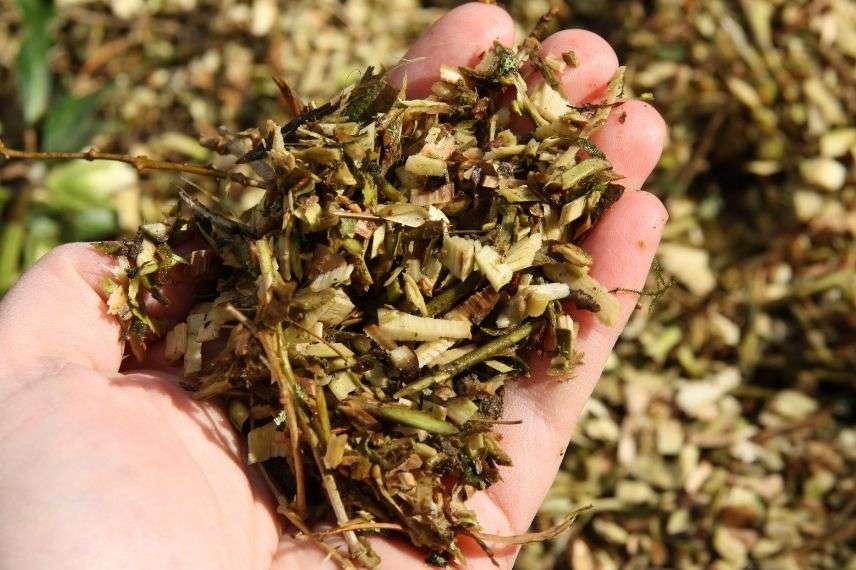
Mulching is THE solution to protect and feed soil ecologically!
Intervene as little as possible!
Gardeners seem to feel the need to intervene at every turn. That idea has been in people’s minds for years. It is as if, to have a beautiful garden, you must work yourself to exhaustion and spend nights there! In reality that’s not the case and sometimes it’s better to let things happen rather than try to control everything.
Increase diversity of natural habitats
- Natural hedge: a hedge of floriferous and fruit-bearing bushes can provide safe shelter and a food source for a whole range of wildlife: birds, insects, spiders, micro-mammals… Find all our ideas for bushes in Natural hedge to enhance biodiversity.
- Pond: natural wet habitats are shrinking fast. a natural pond or small pool can therefore be a welcome refugium for many insects, amphibians, crustaceans… For everything you need to know, read Create a natural pond in your garden.
- Meadows and short grass meadows: it is not always wise to create an artificial wildflower meadow even if it is pretty and useful. Clover and dandelions in your short grass meadow often do an excellent job of feeding bees, especially early in the season.
- Leave dead wood be: often frowned upon by gardeners, dead wood is nonetheless a privileged habitat for wood-eating insects, gastropods, terrestrial crustaceans, mosses, lichens… Keep a few old logs in a corner of your garden. All these little creatures will thank you.
- Rubble piles and dry-stone walls: no need to recreate Hadrian’s Wall at home. a simple small pile of stones without mortar is already enough to shelter spiders, micro-mammals, lizards and amphibians. To avoid taking up too much room in the garden, make these small piles in a mini-pyramid shape.
- Let nature take its course and manage as little as possible: the aim is not to let the garden return to wasteland but you can certainly relax on many gardening tasks. Hedge trimming into perfect shapes, turf cut very short, frantic bed tidying…: all that can wait until tomorrow… or never.
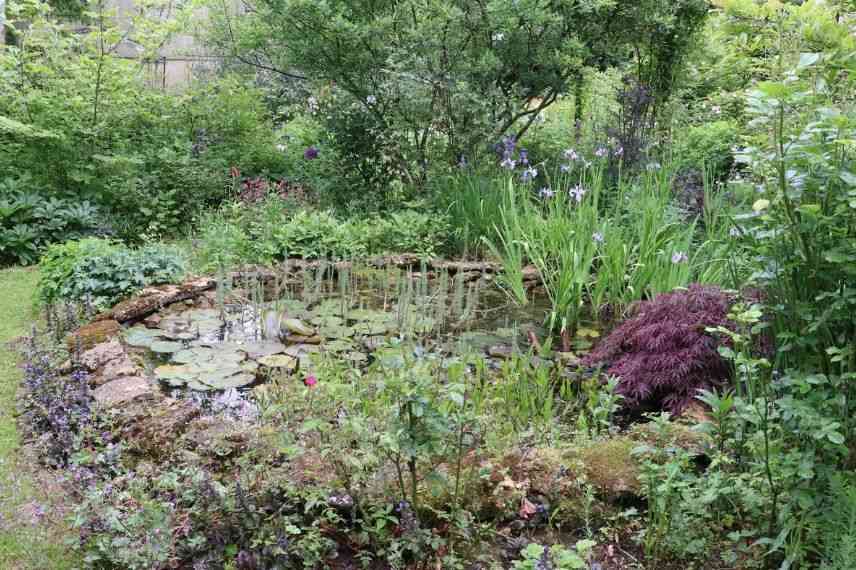
A natural pond is an area particularly rich in biodiversity
Edge effect
Edge effect is so named because it occurs mainly at forest edge. An edge is the transition between forest and another habitat: a meadow, for example. At that location, forest biodiversity combines with meadow biodiversity, enriched by species of the transitional habitat itself. This makes it a place very rich in flora and fauna. These transitional habitats are called ecotones. By multiplying different habitats in your garden, you will multiply these ecotones.
Poor soil?
Paradoxically, the richer the soil, the lower the botanical diversity and therefore the lower the diversity of fauna. In reality, an overly rich soil will only favour nitrophilous plants (nettles, hogweeds, …) which quickly outcompete other species. A poor patch is therefore often a blessing in a natural garden.
Use of sustainable and natural materials
Use natural materials
Green waste can be composted or used as mulch. Some plants can be used in manure as fertilisers or compost activators: nettle, fern, comfrey… Pruning waste can be chipped to create BRF or used for constructions: tipi, wattle, hedgehog shelters… You’ll see that everything in the garden can be recycled! And it will also save you multiple trips to the tip.
“Nothing is lost, nothing is created. Everything is transformed.” Antoine Lavoisier
Too much garden waste? The advice sheet Green waste: recycling and reuse solutions in the garden provides all the tips on how to use it wisely. BRF has many advantages; to learn more, read BRF: What is it? How to use it in the garden? Also discover landscaping ideas in Wood in the garden: ideas and inspiration
Use durable materials
It should go without saying, but if you want to create a small ecological haven at home, you should, as far as possible, minimise use of non-durable materials and favour wood, stone… Also favour materials from local industry or local artisans.
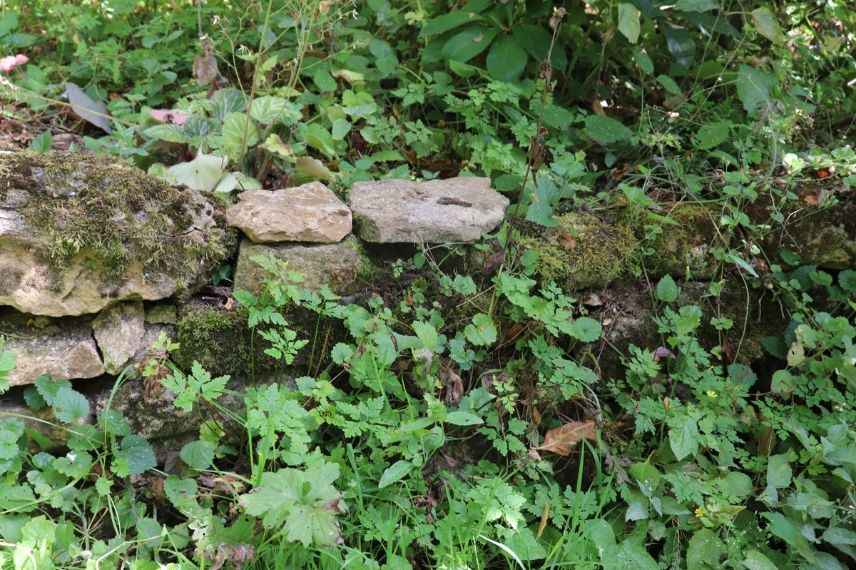
Dry stone wall made from stones recovered in garden
Water management: a resource that will become ever scarcer...
- Keep water! : a rainwater tank is a must. But a few rainwater collection containers can be placed at different points beneath gutters. Be simply vigilant about mosquito larvae that could develop there. Ideally use a closed collection container.
- Dig a pond : it will retain water at least to some extent. This moisture will benefit surrounding plants.
- Water at the right time : there is no point watering during the hottest hours of the day. There are two schools of thought: either you water very, very early in the morning (around five o’clock), or you water when the sun begins to set in the evening. In any case, don’t water when the sun is at its peak…
- Water wisely : in nature, even in humid areas of our regions, it doesn’t rain every ten minutes! There is no need to give your plants water all the time. It’s better to give a good soaking once than a little every evening. Because if you do that, plant will never be able to withstand an occasional drought. Also know that a plant that “seems to be thirsty” often looks that way in reaction to excessive evapotranspiration: it is hot but not thirsty!
- Try alternative techniques: mulching, use of oyas, drip irrigation techniques…
- And of course, planting trees helps regulate humidity (to some extent). And avoid plants that require too much water in summer.
Sometimes we suffer droughts and sometimes the opposite — flooding hits us. Yet a few simple tips can prevent this disaster. Find them in 5 things to do in the garden to reduce risk of flooding.
To go further...
A natural, ecological garden is beautiful and worthwhile! But it’s even better when everyone can see what you are doing to help nature. A good way to do this is to register your garden with a nature network or conservation organisation: refugium LPO at the League for the Protection of Birds, Réseau Nature at Natagora (Belgium), Réseau Hortus France…
That brings several benefits: they will often provide advice or assistance, you’ll get a nice sign to place at the front of your garden to silence the idiots who don’t understand what you are doing, and, above all, your garden will be one small piece of a puzzle — a puzzle that, once completed, will form the largest nature reserve in France and Belgium.
- Subscribe!
- Contents
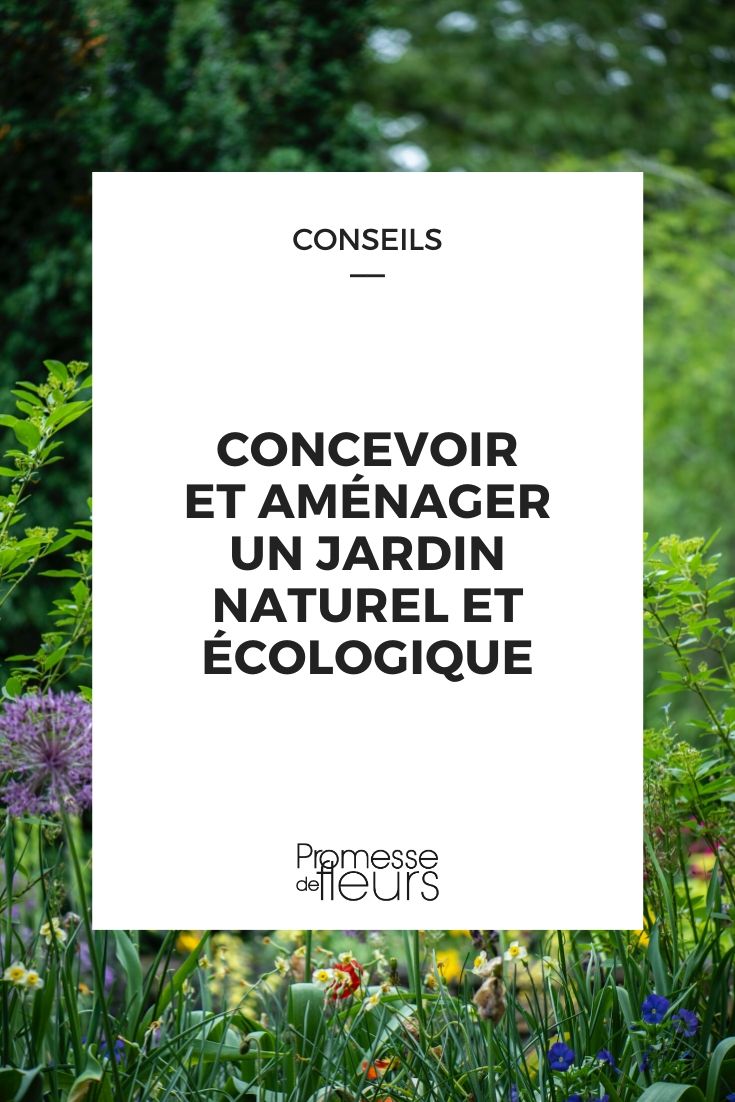































Comments